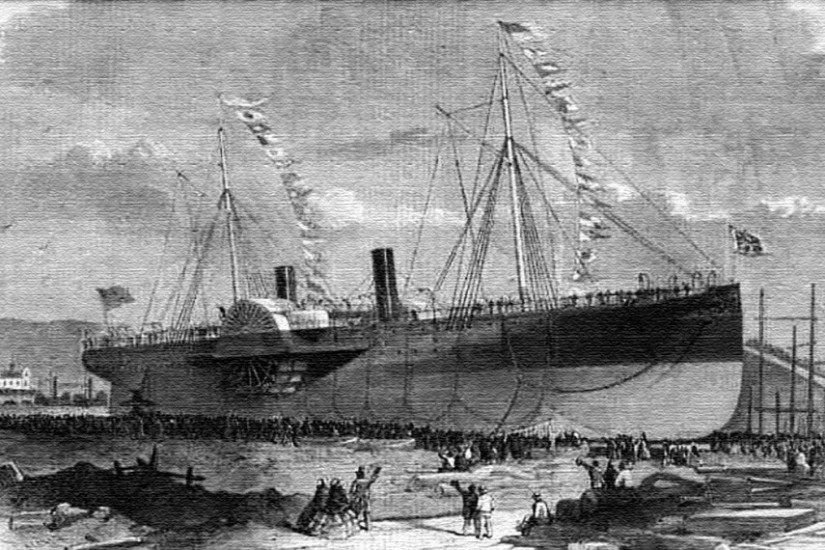The Connaught’s luck began to run out soon after the ship departed St. John’s. On Friday, October 5, 1860, increased winds began beating the ship’s bow. Waves intensified, too, pummeling the steamer overnight and into Saturday. By that evening, the Connaught was facing another full-on tempest.
Around 8 p.m., a leak was discovered in the engine room. Leitch ordered that pumps be brought down from the deck and set his crew to bailing. Some passengers, noticing the commotion, convivially stepped up to lend a hand. Despite their efforts, water began filling the engine room and seeping into the forward bunkers.
Passengers felt the ship pitch hard to the right and stay that way—a result of it taking on so much water. Stepping out onto the deck, Hugh Whittell, the California entrepreneur, was met by a deafening rush of wind. Crewmen were scrambling about for pumps and buckets, muttering to one another. They told Whittell that everything was under control. If the wind cooperated, the Connaught would reach Boston that night.
In fact, the situation was worsening. By early Sunday morning, the encroaching waters belowdecks threatened to kill the fires that powered the forward boilers. Around 4 a.m., the flooding in the engine room extinguished the fire used to fuel the ship’s steam pump, rendering useless an essential tool for combating the leak. Four hours later, water finally overwhelmed the ship’s furnaces, and the engines sputtered to a stop. An eerie quiet followed.
Hundreds of the Connaught’s passengers gathered on deck. Some asked Leitch what they could do to help, and he requested that men continue to bail seawater. Lingering hope soon gave way to dread, however, when anxious whispers spread word of a new danger: fire.
Smoke had begun rising through the stoke hole toward the rear of the ship. Leitch dispatched an officer to find the source of the fire, but the man met only an impenetrable cloud. The blaze, which seemed to be coming from somewhere between the boilers and the stern, must have been building while all hands were dealing with the leak.
The exhausted crew responded with buckets of seawater and wet blankets, but they were fighting blind. Unable to get close to the fire’s source due to the flooding and smoke, they could only aim their dousing in the general vicinity of where the flames emanated from deep within the ship’s belly. The Connaught was still taking on water and slumping further into the sea. Waves sizzled as they met the metal hull, which was burning from the inside out.
